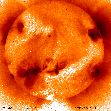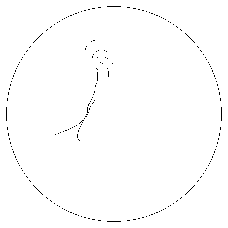 |
 |
The coronal holes are undergoing remarkable gyrations during the rise phase of the new maximum, as might be expected from the frequent occurrence of major active regions with lots of new magnetic flux (see for example the global connectivity science nugget from July 18, 1998). Conventional wisdom and reasonable models show that the reconnections of this flux play a major role in defining the coronal-hole boundaries, although mysterious forces (ie, the reconnection itself) are still at work.
The routine full-Sun Yohkoh SXT images from Jan. 8 showed two coronal holes on the disk, as seen in the left panel below; the right panel shows an almost-contemporaneous He 10830 A image from Kitt Peak:
 |
 |
Both of these images show the two coronal holes of interest. One is in the NE quadrant (upper left), and in the SXT image it appears to have a "whorl" character. This sort of pattern, in an active region, is what tipped early solar astronomers off as to the presence of strong magnetism in the solar atmosphere, of course. But here we're seeing a well-organized whorl in the boundary around a non-active region. In fact, if you inspect the SXT image, you'll see that the whorl has a truly gigantic appearance, reaching right over to the SE coronal hole boundary (see below). This cannot be seen in the 10830 chromospheric image, but this image also shows something (many things) interesting: a curiously well-developed network pattern in the hole, at the heart of the whorl.
The second coronal hole of interest, in the SW quadrant, is more prosaic: SXT does not show a whorl, and 10830 does not show a network pattern. This coronal hole has a shape that is probably more typical of low-latitude holes, namely a diagonal extension suggesting the effects of differential rotation, one of the clues that active-region magnetic flux (which rotates differentially) participates in the formation of the coronal-hole boundaries.
Now for the speculation, not really necessary here because the image morphology is already pretty interesting, as discussed above! I think that the trans-equatorial loops connecting into the whorl might show a current-sheet structure. The reason for this hypothesis is that there appears to be a cusp in the south, whose point leads into one of the transequatorial "loops". That would willy-nilly force it to be bipolar magnetically, assuming that each footpoint of the cusp represents an opposing field polarity - otherwise it would not sit well with Maxwell's equations!` A sketch:

This kind of connectivity, though it seems weird, matches that found by Dave Webb in certain CME eruptions. These appear to be quadrupolar in nature, and suggest the recent "breakout" model by Antiochos et al.
If these ideas are flagrantly wrong, please contact the undersigned! This sort of theme for an SXT science nugget has been inspired by Karen Harvey, but she hasn't seen how grossly her ideas can be perverted yet.
Comments to: hudson@isass0.solar.isas.ac.jp